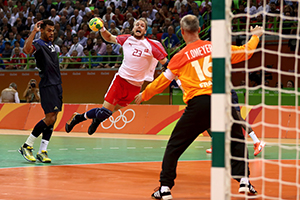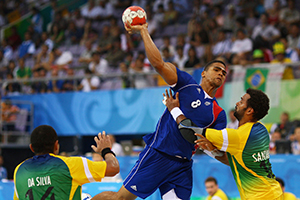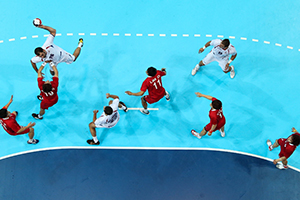HANDBALL
Teams of seven players pass and dribble a ball up the court to throw the ball into the opposition's goal, which happens often: spectators might see 60 goals or more in a single match.
SPORT HISTORY
Handball was created and developed in Denmark, Sweden and Germany in the late 19th century. Originally played outdoors as field handball, the sport first appeared at the Berlin 1936 Games. The modern indoor version made its Olympic debut at Munich 1972. The first women's competition was held at the Montreal 1976 Games. Handball has featured at every Olympic Games since. The International Handball Federation (IHF), founded in 1946, is the administrative and governing body of handball and beach handball. The IHF has 209 member federations.
Twelve teams will compete in both the men's and women's competitions at Tokyo 2020. Teams will begin in a group phase with the top eight nations progressing into the knockout phase of the tournament.
CHALLENGING EUROPE'S DOMINANCE
The only non-European country to win a medal in men's handball is Republic of Korea, who took silver at the Seoul 1988 Games. That country has, however, been a perennial contender in the women's competition, winning six medals including gold at Seoul 1988 and Barcelona 1992. At the Rio 2016 Games, Denmark, France and Germany won the gold, silver and bronze medals in the men's competition. In the women's tournament, Russia, France and Norway won the gold, silver and bronze medals.As handball continues to grow in popularity around the world, men's and women's teams from Africa, South America and the Middle East will also contend for medals — together, of course, with host nation Japan.
Highest Governing Body
International Handball Federation
First Played
2 December 1917 in Berlin, Germany
Contact
Limited
Team Members
7 per side (including goalkeeper)
Type
Team sport, ball sport





